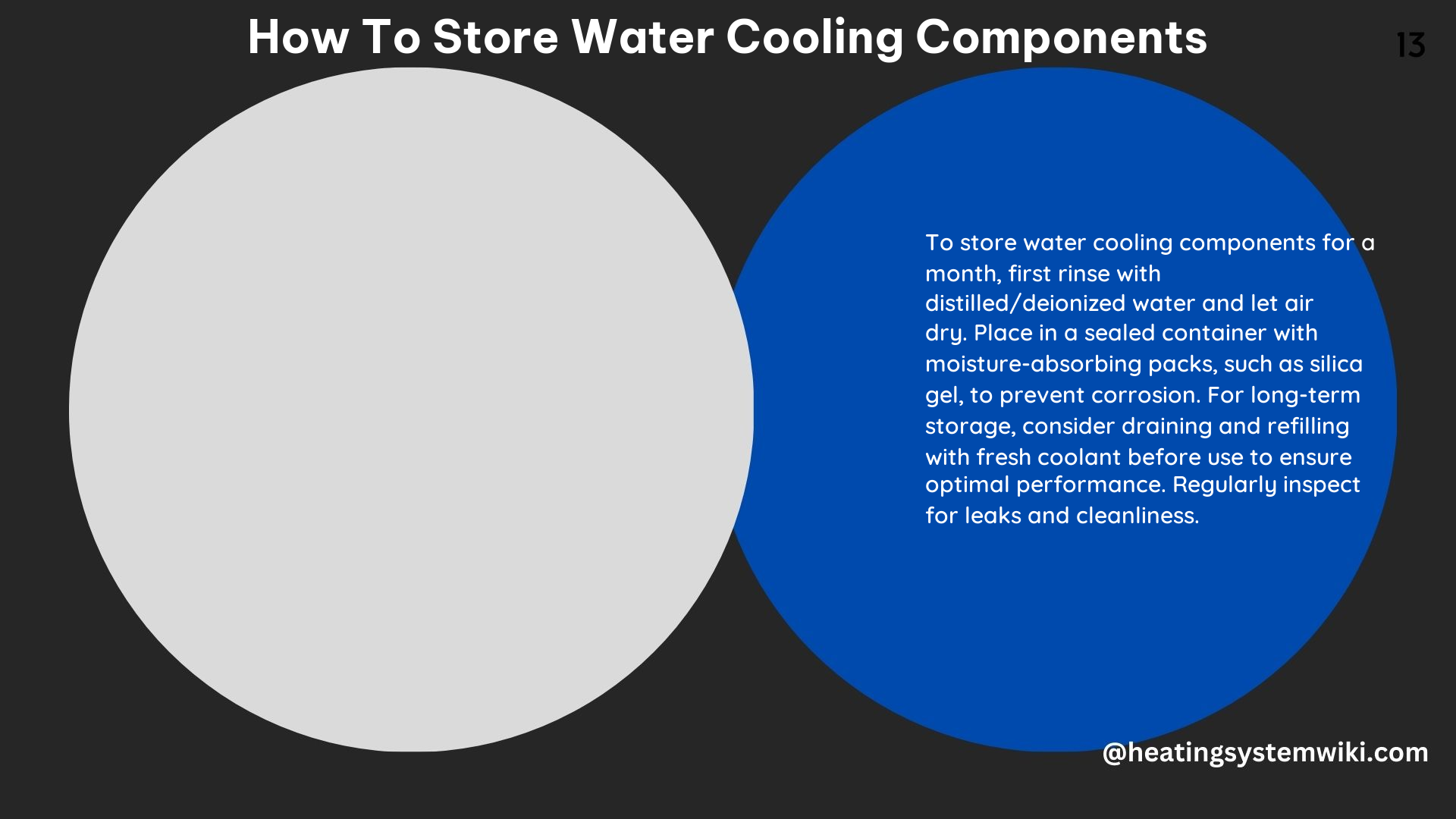Storing water cooling components properly is crucial to ensure their longevity and prevent any damage or corrosion. This comprehensive guide provides advanced hands-on details, technical specifications, and best practices for storing water cooling components effectively.
Cleaning and Drying
After using the water cooling components, it’s essential to clean and dry them thoroughly. Start by flushing the components with distilled or deionized water to remove any coolant or debris. Distilled water has a pH of 7.0 and a conductivity of less than 1 μS/cm, ensuring it won’t leave any mineral deposits or residue behind.
Once the components are flushed, let them air dry completely. This process can take several hours, depending on the size and complexity of the components. Ensure that all surfaces are completely dry before proceeding to storage. This step is crucial in preventing any bacterial or fungal growth that can cause corrosion or damage to the components.
Moisture Absorbers

To prevent any moisture buildup during storage, use moisture absorbers such as silica gel packs or clay desiccant packs. Silica gel packs can absorb up to 40% of their weight in water, while clay desiccant packs can absorb up to 20% of their weight. Place a few packs in the storage container or bag to ensure adequate moisture absorption.
The ideal relative humidity for storing water cooling components is less than 60%. Exceeding this level can lead to condensation, which can cause corrosion and damage to the components.
Storage Container
Use a storage container that is airtight and waterproof. A plastic storage container with a tight-fitting lid is ideal, as it will prevent any moisture from entering the container. Make sure the container is clean and dry before placing the components inside.
Avoid using cardboard boxes or containers that are not airtight, as they can allow moisture to enter and damage the components. The container should be large enough to hold all the components with some extra space for padding.
Temperature and Humidity
Store the components in a cool, dry place with low humidity. Ideally, the storage temperature should be between 50-70°F (10-21°C) with a relative humidity of less than 60%. Avoid storing the components in areas with high humidity, such as basements or bathrooms, as this can cause condensation and corrosion.
Exposure to high temperatures can also lead to damage, as it can cause the components to warp or deform. Ensure that the storage area is well-ventilated and away from any heat sources.
Protection
Protect the components from any physical damage during storage. Use bubble wrap or foam padding to wrap the components and prevent any scratches or dents. Avoid stacking heavy objects on top of the storage container, as this can cause damage to the components.
When wrapping the components, use a minimum of 1/4 inch (6.35 mm) of padding to ensure adequate protection. For larger or more delicate components, consider using 1/2 inch (12.7 mm) or even 1 inch (25.4 mm) of padding.
Labeling
Label the storage container with the contents and date of storage. This step can help you keep track of the components and ensure they are not stored for too long. It’s recommended to use the components within six months of storage, as prolonged storage can lead to degradation of materials and seals.
When labeling the container, use a permanent marker or a label maker to ensure the information is clearly visible and durable. Consider including the specific model or part numbers of the components to make it easier to identify them later.
DIY Storage Container
DIY enthusiasts can create their own storage container for water cooling components using a plastic storage container, moisture absorbers, and foam padding. Here are the steps:
-
Choose a Plastic Storage Container: Select a plastic storage container with a tight-fitting lid. Make sure the container is large enough to hold all the components with some extra space for padding. Polypropylene (PP) or polyethylene (PE) containers are recommended, as they are durable and resistant to moisture.
-
Add Moisture Absorbers: Place a few moisture absorbers, such as silica gel packs or clay desiccant packs, at the bottom of the container. Ensure that the packs are rated for the appropriate volume of the container to provide adequate moisture absorption.
-
Wrap the Components: Wrap each component in bubble wrap or foam padding to prevent any physical damage during storage. Use a minimum of 1/4 inch (6.35 mm) of padding, and consider using 1/2 inch (12.7 mm) or 1 inch (25.4 mm) for larger or more delicate components.
-
Place the Components: Place the wrapped components in the container, making sure they are not touching each other. This will prevent any potential damage from component-to-component contact.
-
Add Extra Padding: Fill any empty spaces in the container with foam padding or bubble wrap to prevent the components from moving around during transportation or handling.
-
Seal the Container: Close the lid of the container tightly and seal it with tape to ensure it’s airtight. This will help maintain the low-humidity environment inside the container.
-
Label the Container: Label the container with the contents and date of storage, using a permanent marker or label maker.
By following these steps, you can create a customized and effective storage solution for your water cooling components, ensuring their longevity and performance.
References:
– Water Cooling Parts Storage – Tom’s Hardware Forum
– What are the best practices for maintaining and cleaning a liquid cooling system?
– How to Maintain a Liquid Cooled PC
– Silica Gel Desiccant Packs: How They Work and How to Use Them
– Clay Desiccant Packs: A Versatile Moisture Absorber
